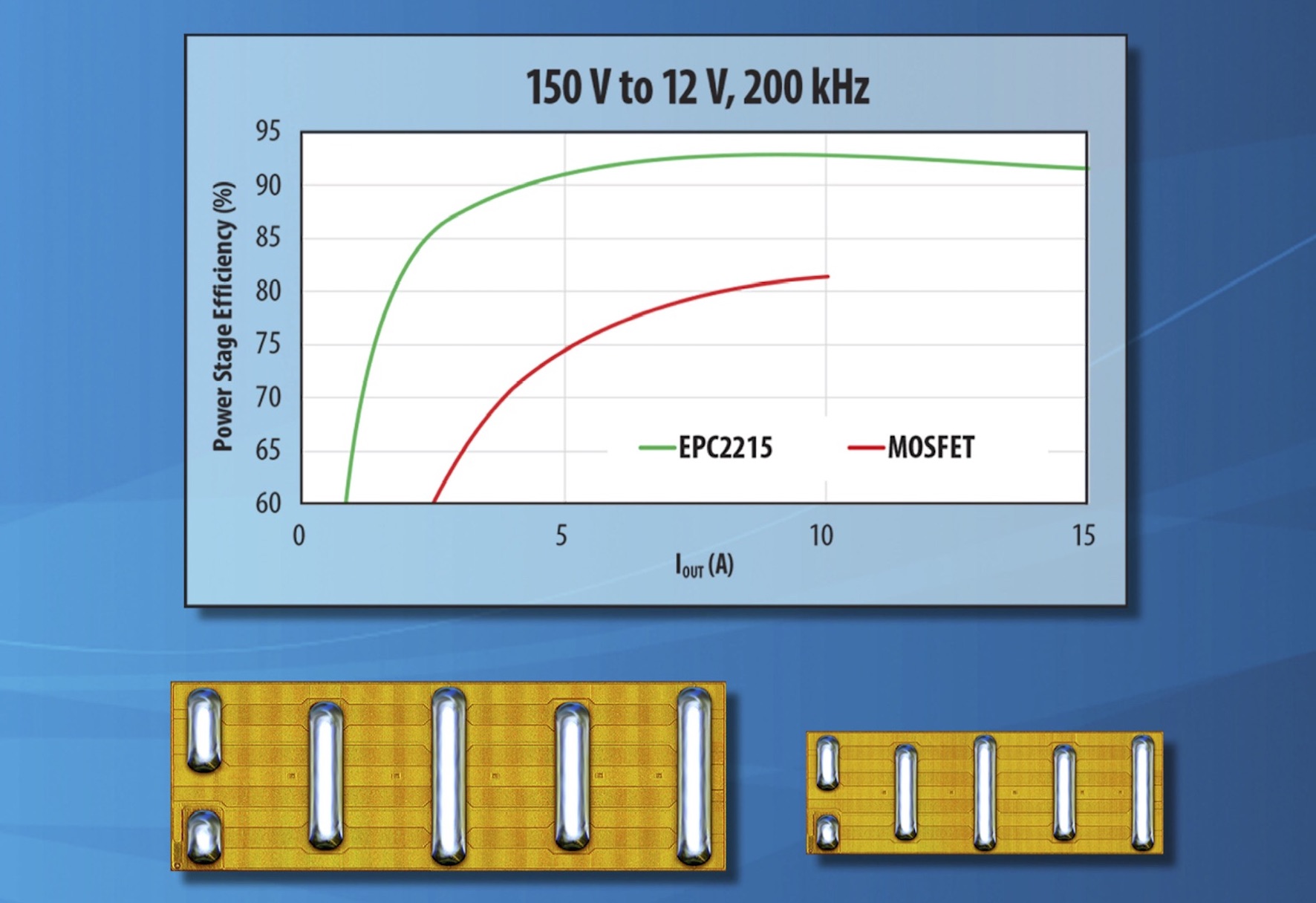EPC Doubles 200V eGaN FET Performance

New generation FETs are suitable for synchronous rectification, class-D audio, solar microinverters, and high-voltage AC/DC converters
EPC has increased performance while lowering the cost of off-the-shelf GaN transistors with the introduction of the EPC2215 and EPC2207 200 V eGaN FETs.
Applications for these devices include class D audio, synchronous rectification, solar MPPTs (maximum power point tracker), DC-DC converters (hard-switched and resonant), and multilevel high voltage converters.
The EPC2215 (8 mΩ, 162 Apulsed) and the EPC2207 (22 mΩ, 54 Apulsed) are about half the size of the prior generation 200 V eGaN devices and double the performance. The performance advantage over a benchmark silicon device is even higher. The EPC2215 has 33 percent lower on-resistance, yet is 15 times smaller in size, according to the company.
Gate charge (QG) is ten times smaller than the silicon MOSFET benchmark with the new technology, and like all eGaN FETs, there is no reverse recovery charge (QRR) enabling lower distortion class D audio amplifiers as well as more efficient synchronous rectifiers and motor drives.
Performance comparison
According to Alex Lidow, EPC’s co-founder and CEO, “This latest generation of eGaN FETs achieve higher performance in a smaller, more thermally efficient size, and at a comparable cost to traditional MOSFETs. The inevitable displacement of the aging power MOSFET with GaN devices is becoming clearer every day.”
EPC worked in collaboration with Semiconductor Power Electronics Center (SPEC) at University of Texas at Austin to develop a 400 V, 2.5 kW-capable eGaN FET-based four-level flying capacitor multilevel bridgeless totem-pole rectifier that is suitable for data center applications using the new EPC2215 200 V device. Alex Huang a professor at the university commented that: “the advantageous characteristics of eGaN FETs allowed this converter to achieve high power density, ultra-high efficiency, and low harmonic distortion.”



































